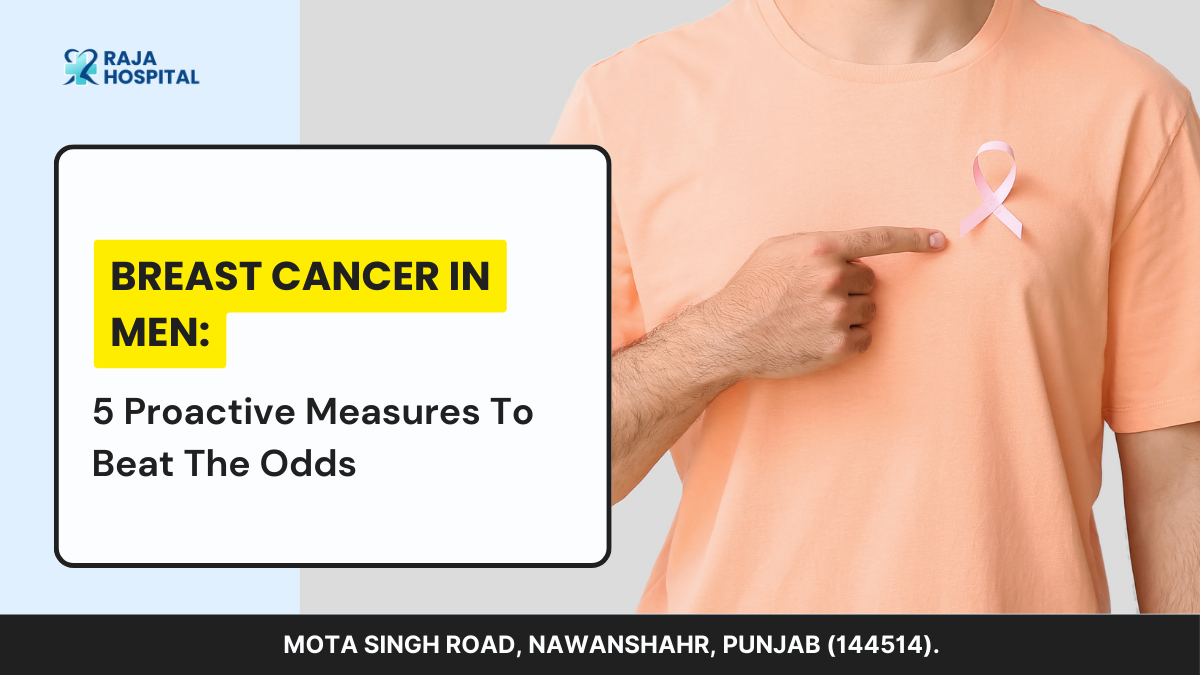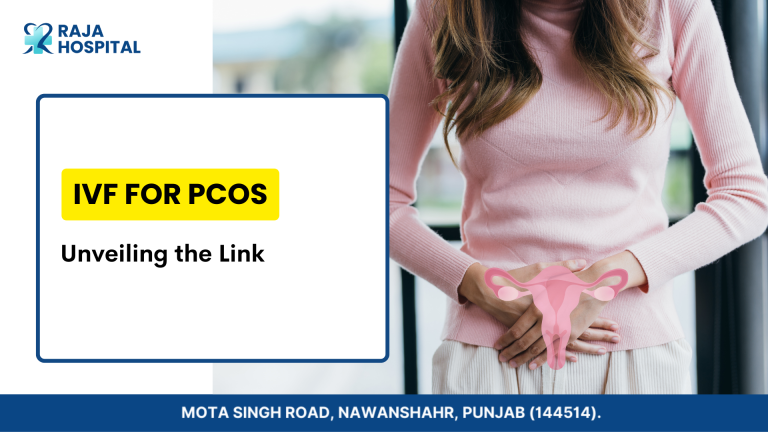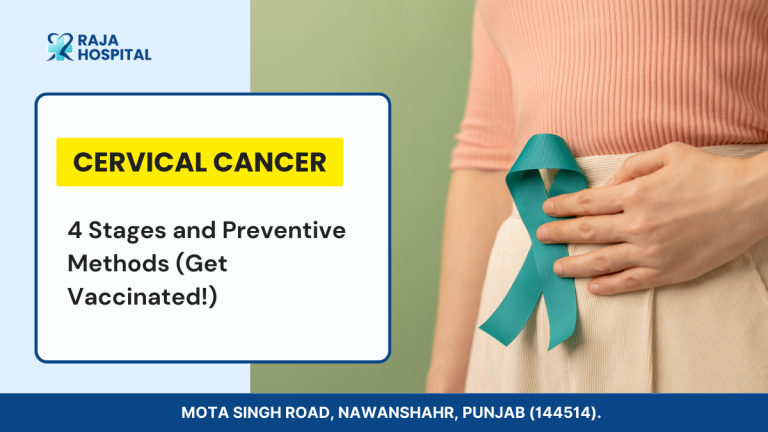Breast Cancer In Men: 5 Proactive Measures To Beat The Odds
REVIEWED BY DR. LAKSHITA SAINI (MBBS, MS OBS & GYNAE) ON 10TH May 2024.
Have you known that men too can get breast cancer? Breast cancer among men exists, and if ignored, this can turn out to be life-threatening, Although it is something that mostly occurs in women. It is not precisely a subject one would raise for the beginning of a discussion; it might sound awkward since it is a needed one for breaking stigmas and shining light on this rare condition. The only way to change this is through understanding and dealing with it head-on, empowering men with knowledge of proactive measures that could help tip the odds in their favour. Today we simplify the complexities of male breast cancer together, from its origins to the frontiers of prevention and treatment.
What is Breast Cancer in Men?
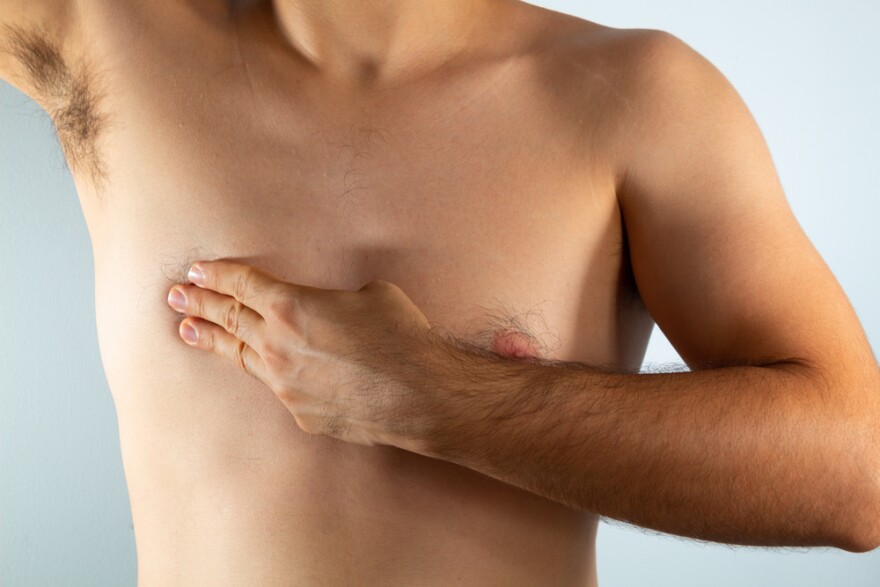
Breast cancer in men is a rare but very serious condition characterized by the formation of malignant cells in the breast tissues of men. Similarly to women, men possess breast tissue that is susceptible to cancerous changes, though it is less developed.
Breast cancer in men mostly starts in the milk ducts or glands of the breast. Even though these parts are not functional in men, the risk factors for male breast cancer are similar to other types of the disease.
Types of Male Breast Cancer
Breast cancer in male manifests in various forms, including:
- Invasive Ductal Carcinoma (IDC): Most common, starting in the ducts and spreading to other parts.
- Ductal Carcinoma In Situ (DCIS): Non-invasive, contained within the ducts.
- Invasive Lobular Carcinoma: Rare, begins in the lobules.
How Common is Male Breast Cancer?
Every year, 1.4 million people are diagnosed with cancer in India, where one of the most diagnosed is breast cancer. Most of them are around women, but it’s critical to understand that even men are at risk, though it is highly rare. The figures are overwhelming: in 2018, one in two women who got the disease died of it, signalling the high mortality rate primarily because of late detection. This is one reality emphasizing how the work in raising awareness and early diagnosis can change the course in outcomes very strikingly. On the other hand, discussion on the issue of male breast cancer is quite rare.
A small number of people know, therefore generating very little awareness, but potentially leading to late diagnosis of the illness in men. Thus, filling this gap and boosting the conversation and education of men concerning breast cancer is of extreme importance for early detection and effective treatment of the disease. Awareness can save lives; therefore, male breast cancer is a must-have discussion topic in all health forum platforms in India.
Symptoms
So, why aren’t we talking more about male breast cancer? It’s a complex mix of lack of awareness, societal stigmas, and perhaps a dash of disbelief. But the truth is, cancer doesn’t discriminate by gender, and neither should our awareness and conversations about it. Here, the key symptoms include:
- A lump or thickening in or near the breast area: This is often the first noticeable symptom, which can be felt under the skin.
- Changes to the skin over the breast: Such as dimpling, puckering, redness, or scaling.
- Changes to the nipple: Including redness, scaling, or a nipple that begins to turn inward.
- Discharge from the nipple: This could be clear or bloody.
Causes
The exact causes of male breast cancer remain unclear, but some of these are:
- Genetics: BRCA1 and BRCA2 mutations increase risk.
- Hormones: Imbalance, especially high estrogen, elevates risk.
- Age: Risk rises with age, most common after 60.
- Radiation: Previous chest radiation can increase the risk.
- Klinefelter Syndrome: Extra X chromosome boosts estrogen, risk.
- Alcohol: Heavy drinking is linked to a higher risk of liver disease which in turn affects hormone levels and increases the risk of breast cancer in men.
- Occupation: Exposure to certain chemicals may slightly increase risk.
5 Prevention Tips That Can Help
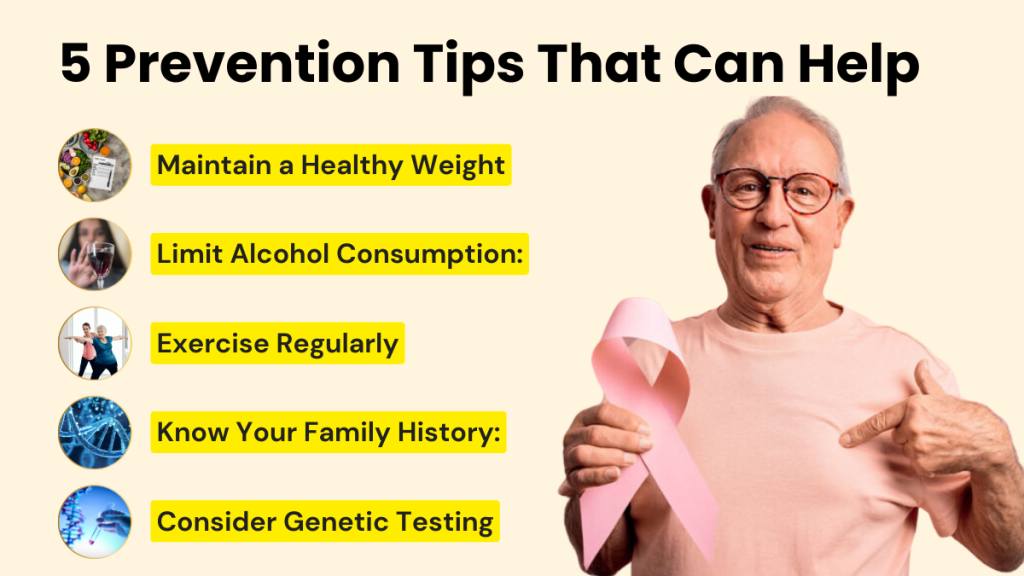
While some factors, like genetics and age, cannot be changed, focusing on modifiable lifestyle factors can help reduce the overall risk of developing breast cancer.
- Maintain a Healthy Weight: Obesity is a known risk factor.
- Limit Alcohol Consumption: Alcohol can increase the risk.
- Exercise Regularly: Physical activity is beneficial for overall health.
- Know Your Family History: Understanding genetic risks can guide preventive measures.
- Consider Genetic Testing: For those with a family history, genetic testing can offer insights.
Diagnoses and Tests
The steps to diagnosing breast cancer are almost similar to those of females, though in most cases, the diagnosis often takes the individual by surprise, and most men are not too sure about it. Knowing the steps of diagnosis can help demystify the process and prepare you for what’s ahead; here is how it usually goes:
Initial Consultation: Discussion of Symptoms: You’ll talk about any changes you’ve noticed, no matter how small they might seem.
Medical History Review: Your doctor will ask about your medical and family history to assess risk factors.
Physical Examination:

Breast Examination: The doctor will check for lumps, skin changes, or nipple discharge.
Check the lymph nodes: She will also check the lymph nodes in the area to see whether they have become swollen and if the cancer has spread to them.
Imaging Tests:
Mammography: Yes, men undergo mammograms too. This x-ray of the breast can reveal masses or suspicious areas. Ultrasound: This is normally used adjunctively to mammography in the evaluation of the lump so as to distinguish between solid masses and fluid-filled cysts.
Biopsy Procedures:
Needle Biopsy: The most common form, where a needle is used to take a small sample of tissue from the lump.
Surgical Biopsy: Sometimes the surgeon may have to remove the lump or the suspicious area of the tissue in the breast completely for checking breast cancer.
Lymph Node Biopsy: If there’s concern the cancer has spread, a biopsy of the lymph nodes may be performed.
Pathological Analysis:
Histological Examination: The biopsy sample is examined under a microscope to identify cancer cells.
Receptor Testing: Tests are done to look for hormone receptors or other proteins that influence treatment options.
Further Testing if Needed:
MRI: Offers a more detailed image of the breast tissue, useful for planning surgery.
CT and Bone Scans: These may be recommended to check if the cancer has spread beyond the breast.
They are all crucial for providing relevant information that is instrumental in tailoring the most efficient treatment plan for you. Don’t forget that early detection and diagnosis are pertinent to a better prognosis. Early contact with a healthcare provider may be very useful in case some change or symptom is noticed.
Main Stages of Male Breast Cancer

Breast cancer stages range from 0 to IV, with higher numbers indicating more advanced cancer. The stages reflect tumor size, lymph node involvement, and the spread of cancer. These Stages are:
Stage 0:
It is the starting point where cancer cells are confined to the breast ducts or lobules and have not spread beyond. This stage is also known as ductal carcinoma in situ (DCIS).
Stage 1:
It is the stage where the cancer is still small and has not spread to surrounding tissues. It is often detected early at this stage, which is beneficial.
Stage 2:
The cancer is larger and may have spread to nearby lymph nodes, but it is still localized to the breast area. Treatment can be quite effective at this stage.
Stage 3:
The cancer is larger and may have spread to more lymph nodes or nearby tissues. Treatment may be more aggressive, but there is still hope.
Stage 4:
It is the final stage and it is reached when the cancer has spread to other parts of the body, such as the bones.
How to Manage and Treat
Let’s break down what you need to know in simple terms, here are some steps to manage and treat breast cancer in men:
- Surgery Options:
- Mastectomy: Removal of the whole breast.
- Sentinel Lymph Node Biopsy: Checks for the spread of cancer.
- Radiation Therapy:
- Targets and destroys remaining cancer cells post-surgery.
- Systemic Therapies:
- Hormone Therapy: Blocks hormones that fuel cancer growth.
- Chemotherapy: Kills rapidly dividing cancer cells.
- Targeted Therapy: Attacks specific cancer cell mechanisms.
- Follow-Up and Support:
- Regular doctor visits for health monitoring.
- Psychological support and physical therapy as needed.
- Lifestyle Adjustments:
- Healthy diet and exercise to support recovery.
Treatment Planning
- Treatment plans are personalized, based on cancer stage, health, and preferences.
- Active participation in treatment decisions is encouraged.
When to See the Doctor?

Immediate medical consultation is advised if you notice any unusual symptoms, such as a breast lump, skin changes, or nipple discharge.
- Lump or Knot: Finding a lump in your chest area doesn’t mean panic, but it does mean it’s time to talk to a doctor. It’s like finding an unexpected pothole on your favourite driving route – it’s best to get it checked out.
- Changes in Skin: If the skin on your chest starts to dimple, redden, or show other unusual signs, it’s like noticing a new scratch on your car – it might be nothing, but it’s worth investigating.
- Nipple Changes: Any retraction, itching, or discharge that wasn’t there before? Think of it as your car’s oil light – it’s a signal something needs a professional look.
- Unexplained Pain: Persistent chest pain without any clear reason is like a persistent engine knock. You wouldn’t ignore that, so don’t ignore this either.
Conclusion
The fact is that male breast cancer exists and has to be thought of, realizing that focusing on this disease can make men get encouraged to take care of their health and find a possible earlier diagnosis and aid. Rewrite the story so that no one ever has to make this journey alone.
Facing something like male breast cancer can seem daunting, right? But just like any challenge that life throws at us, knowing your options and taking proactive steps can make a difference. Share to raise awareness. Remember, early detection saves lives. Let’s join our mission to support all men with breast cancer and let them know it’s time to stop hiding in the shadows because of this disease.
At Raja Hospital, we adapt our services under a patient-centred modality. Very advanced treatments to cover your special needs. If a diagnosis of breast cancer has left you reeling, let’s fight this one patient at a time, one recovery after another. Give us a call.

